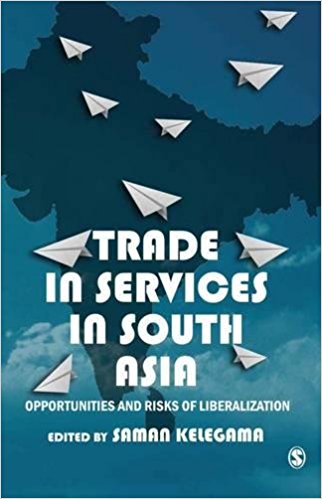This book of essays addresses an important issue of liberalization of service trade in South Asia. It examines seven individual country cases of India, Pakistan, Sri Lanka, Bangladesh, Nepal, Maldives and Bhutan.In addition, there are three other chapters, an Introduction by Saman Kelegama, a South Asian Perspective by Rashmi Banga and a final chapter on domestic regulation and General Agreement on Trade in Services (GATS) by Parashar Kulkarni.The discussion is somewhat limited by data availability and some ambiguity of South Asian Governments as to what they are seeking to achieve under the GATS framework and in opportunities for both multilateral and regional trade. Little is said aboutunilateral or (autonomous)liberalization given the focus of the volume on regional issues.
Services liberalization is a difficult topic since it is not confined to transactions at the border, typical of goods trade. Besides it is not possible to precisely identify the nature of the service that is offered, as to its content and value. Kelegama takes a more pragmatic approach to the issues under discussion and clarifies them in a lucid manner. Of course his task is made difficult due to the absence of a single framework of reference for the country authors and the disparate quality of the papers. Nevertheless, the introductory chapter does credit to a difficult discussion of the central issues of services liberalization. One small peeve that this reviewer has is that there is no symmetry in the presentation of the opportunities and risks. One gets the impression that risks are exaggerated and the opportunities are underplayed. That is not surprising given that South Asia has not been known to be particularly enthusiastic for trade liberalization.Besides, this position has received support fromthe United Nations Conference on Trade and Development (UNCTAD), which continues to champion import substitution in a more sophisticated way compared to its past positions.India was a bulwark against trade liberalization in the past and gave in only in 1991 in the throes of a macroeconomic crisis. Sri Lanka broke that mould when it liberalized trade in goods in 1977 but it has not followed it up with a more open agenda for trade liberalization. India reaped many benefits including raising the GDP growth rate to 6–8 per breaking away from the ‘Hindu rate of growth’ identified by the famous Indian economist, Raj Krishna in the 1960s.

